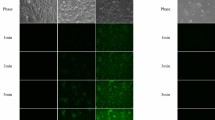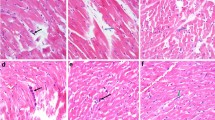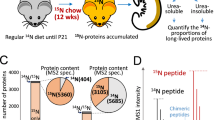Abstract
RENOSINE is the structure-protein of the kidney discovered by I. Banga and A. Szent-Györgyi1. It constitutes up to a third of the total protein content of the kidney, is highly viscous, exhibits thyxotropy and an intense negative double refraction of flow. It contains inextractable phosphorus and seems thus to be a nucleoprotein.
This is a preview of subscription content, access via your institution
Access options
Subscribe to this journal
Receive 51 print issues and online access
$199.00 per year
only $3.90 per issue
Buy this article
- Purchase on Springer Link
- Instant access to full article PDF
Prices may be subject to local taxes which are calculated during checkout
Similar content being viewed by others
References
Banga, I., and Szent-Györgyi, A., Enzymofogia, 9, 111 (1940).
Author information
Authors and Affiliations
Rights and permissions
About this article
Cite this article
MATOLTSY, A. Electron Microscope Observation of Renosine. Nature 161, 353–354 (1948). https://doi.org/10.1038/161353b0
Issue Date:
DOI: https://doi.org/10.1038/161353b0
Comments
By submitting a comment you agree to abide by our Terms and Community Guidelines. If you find something abusive or that does not comply with our terms or guidelines please flag it as inappropriate.



